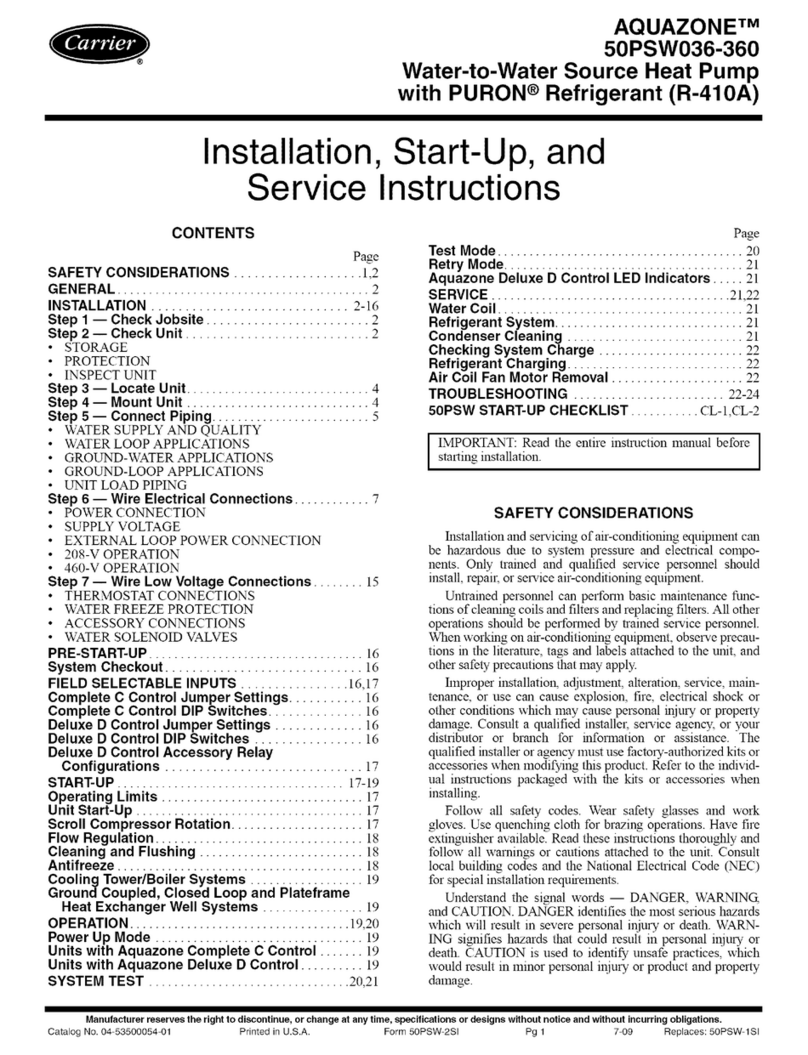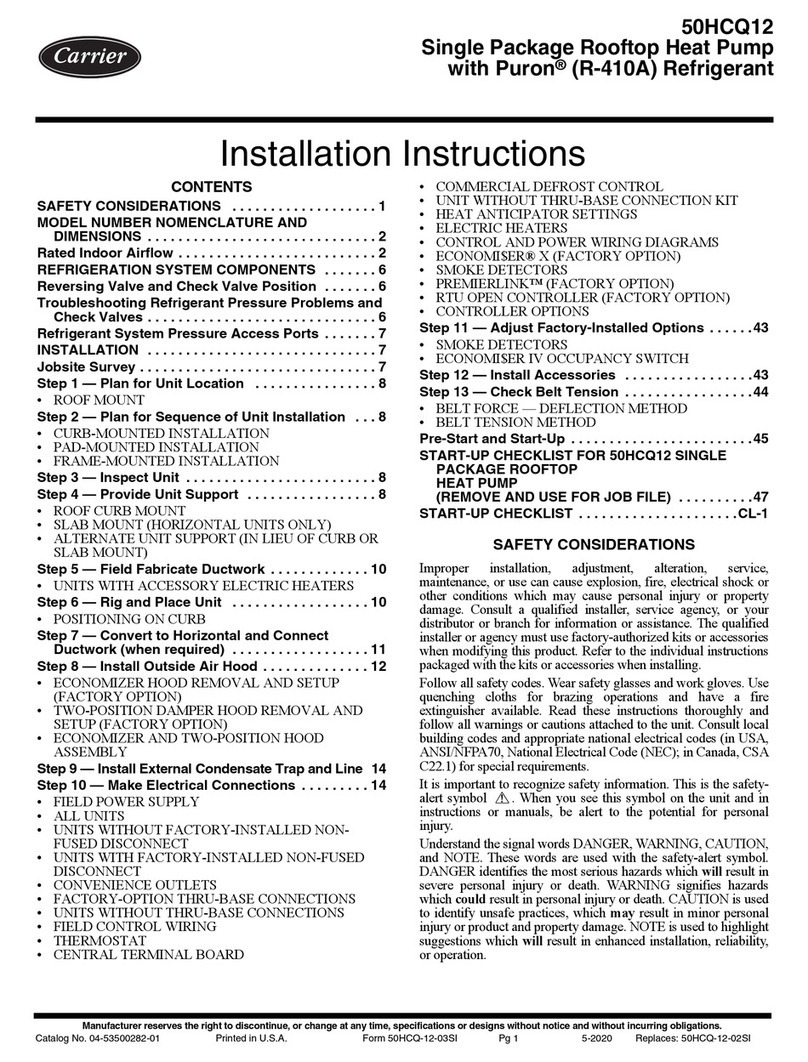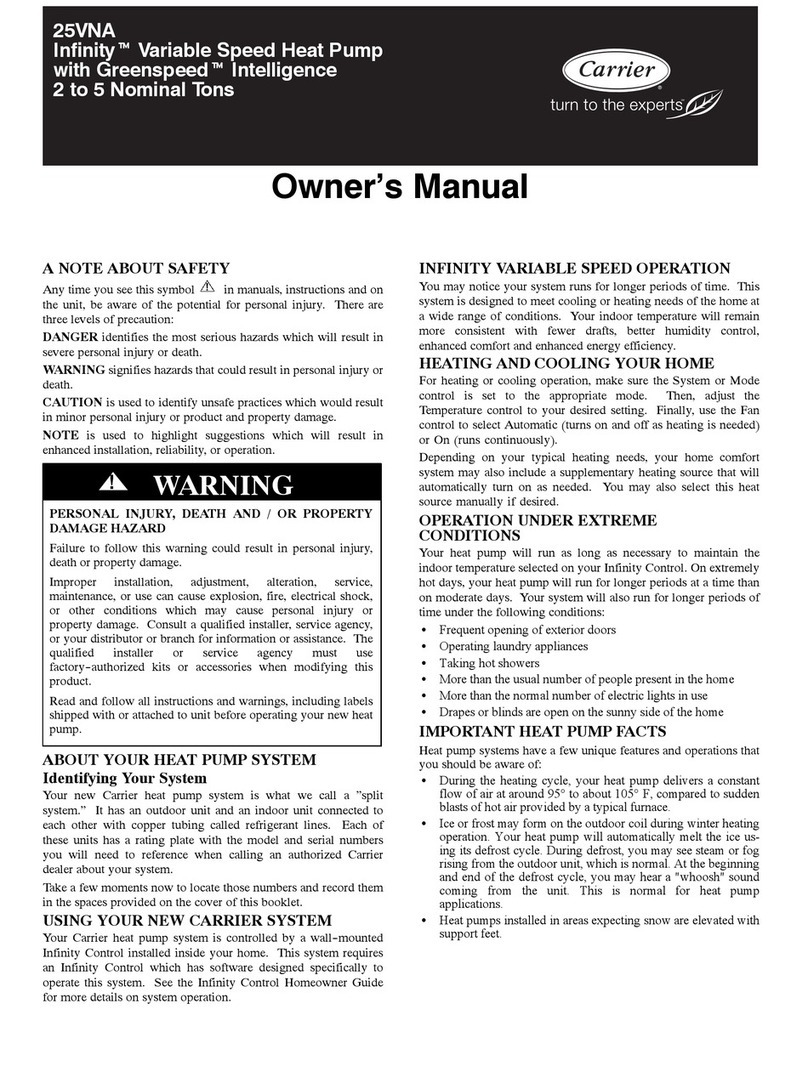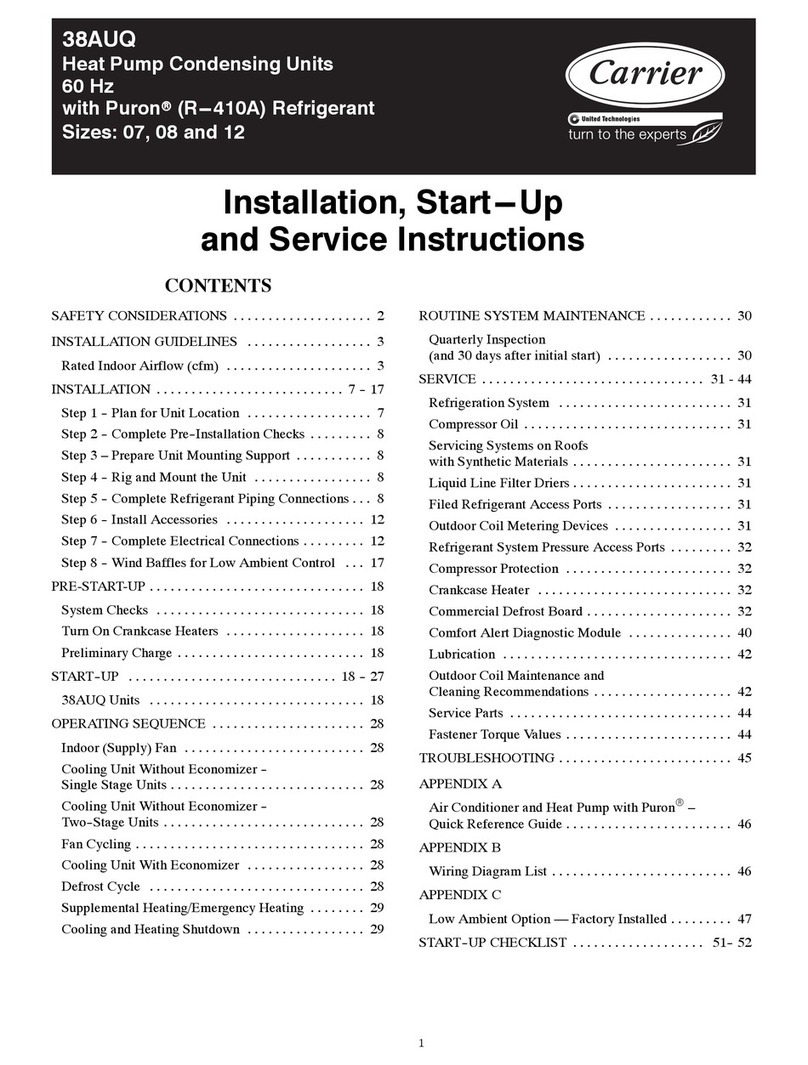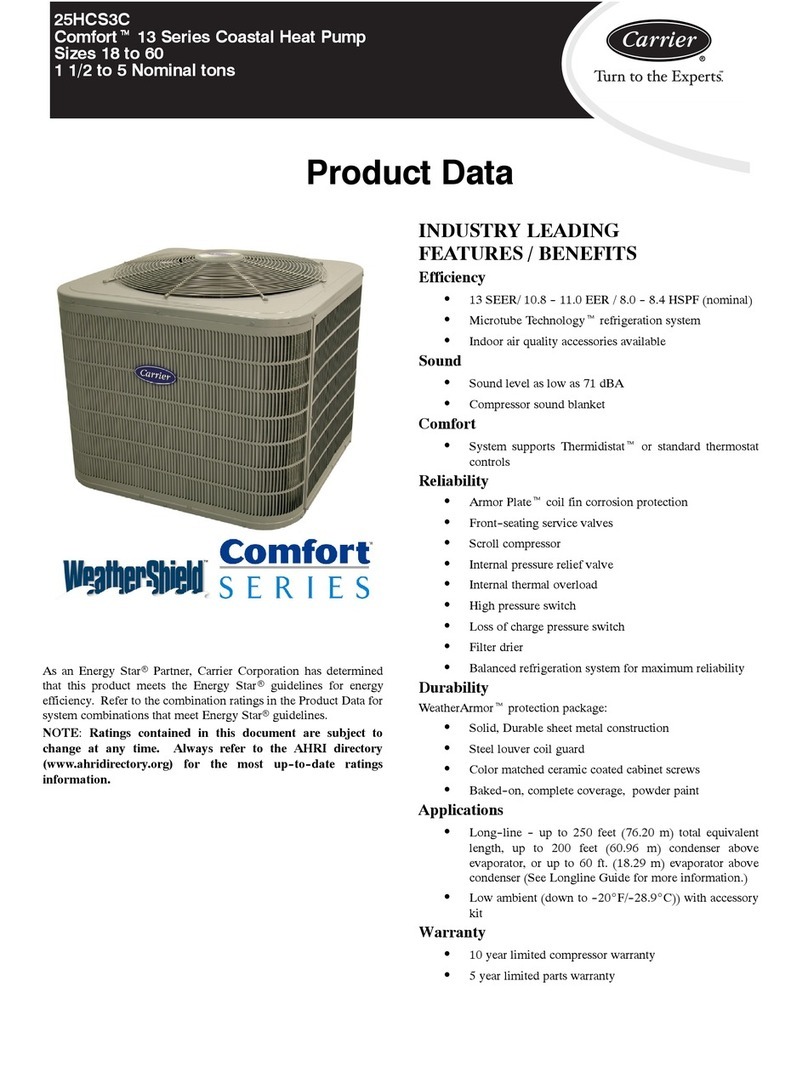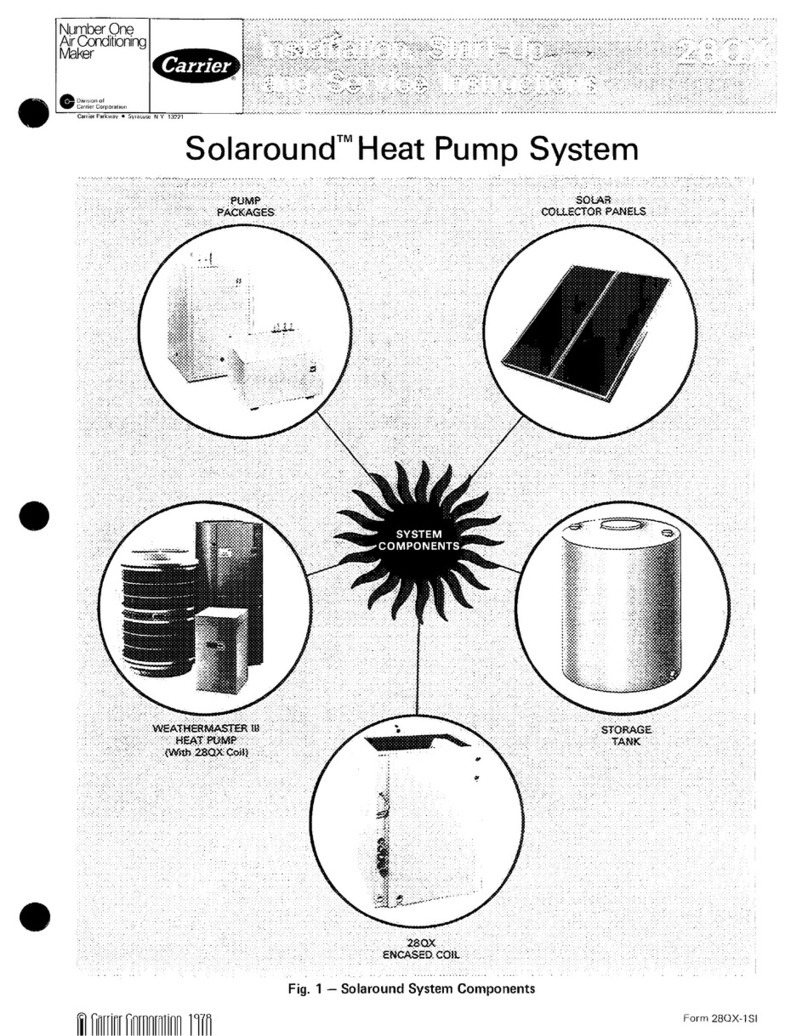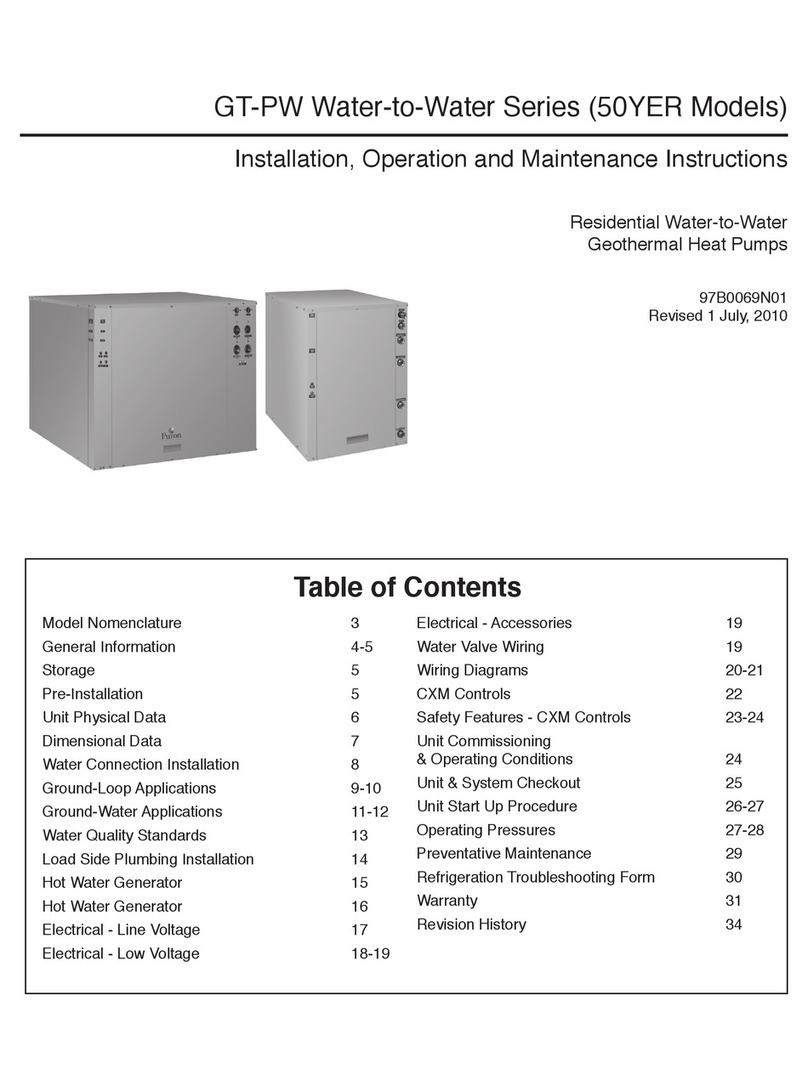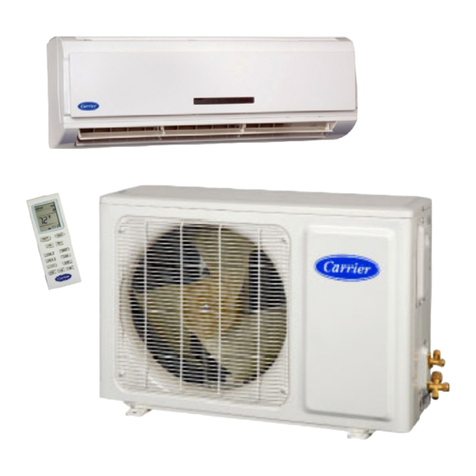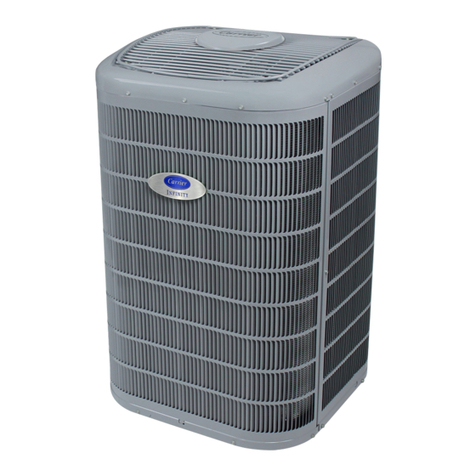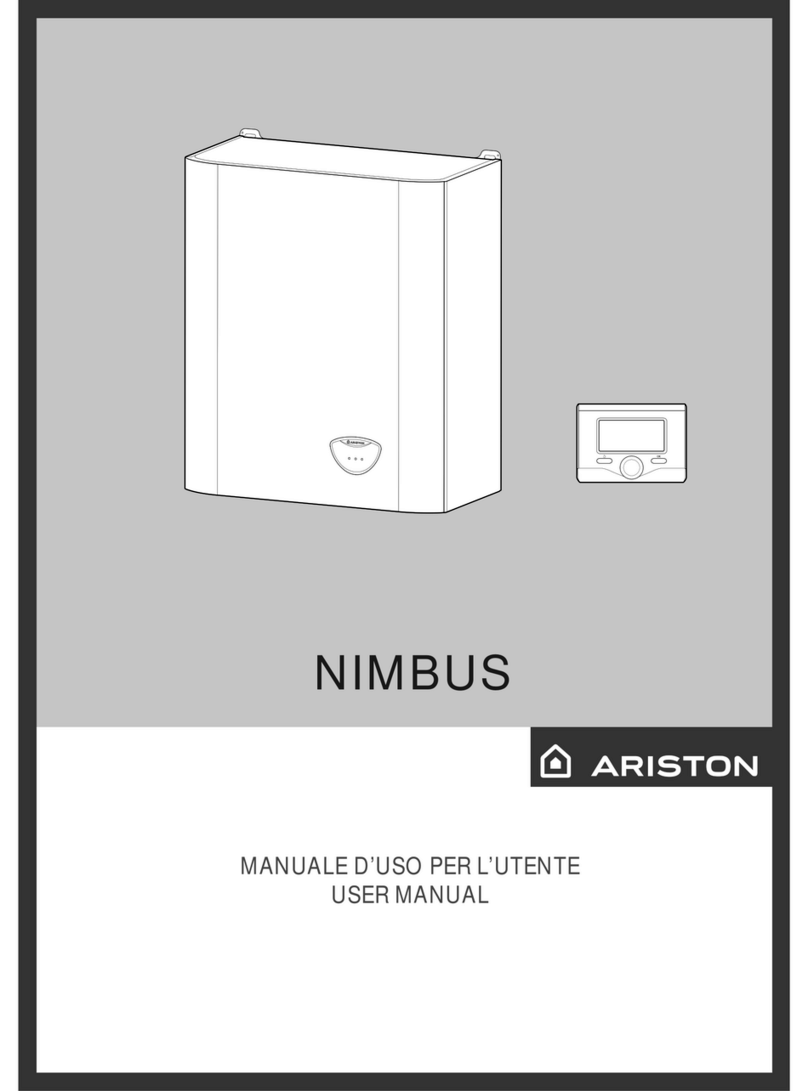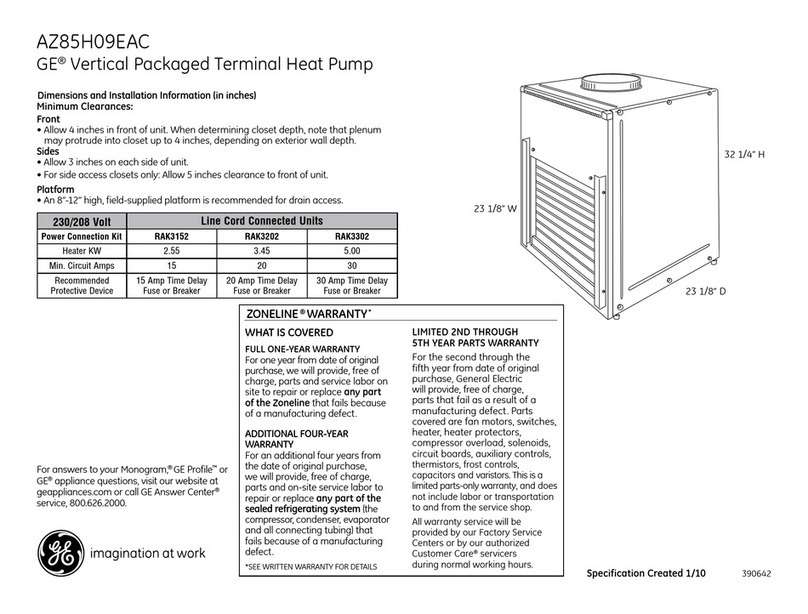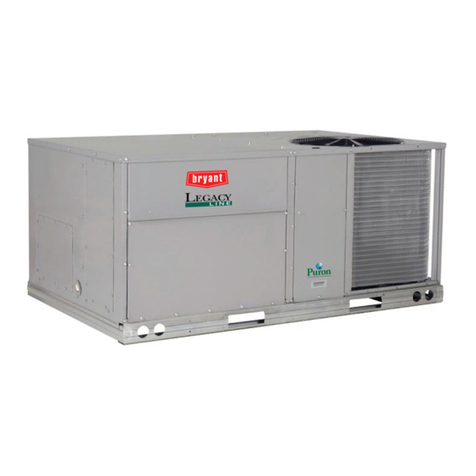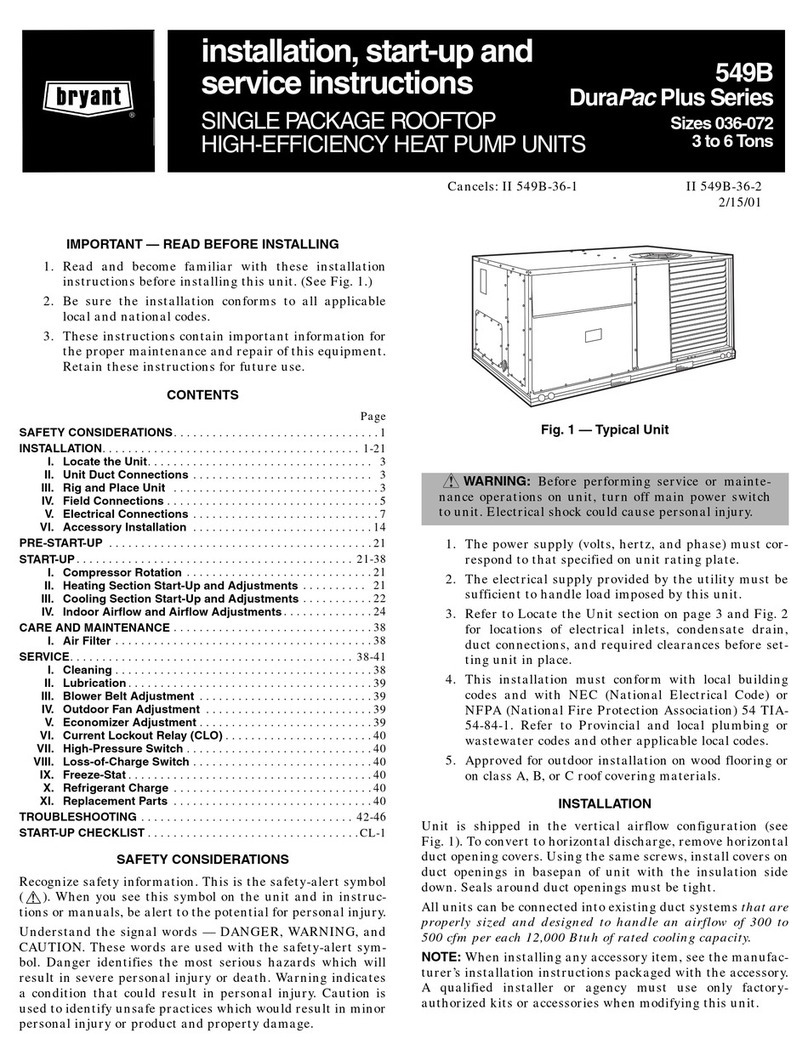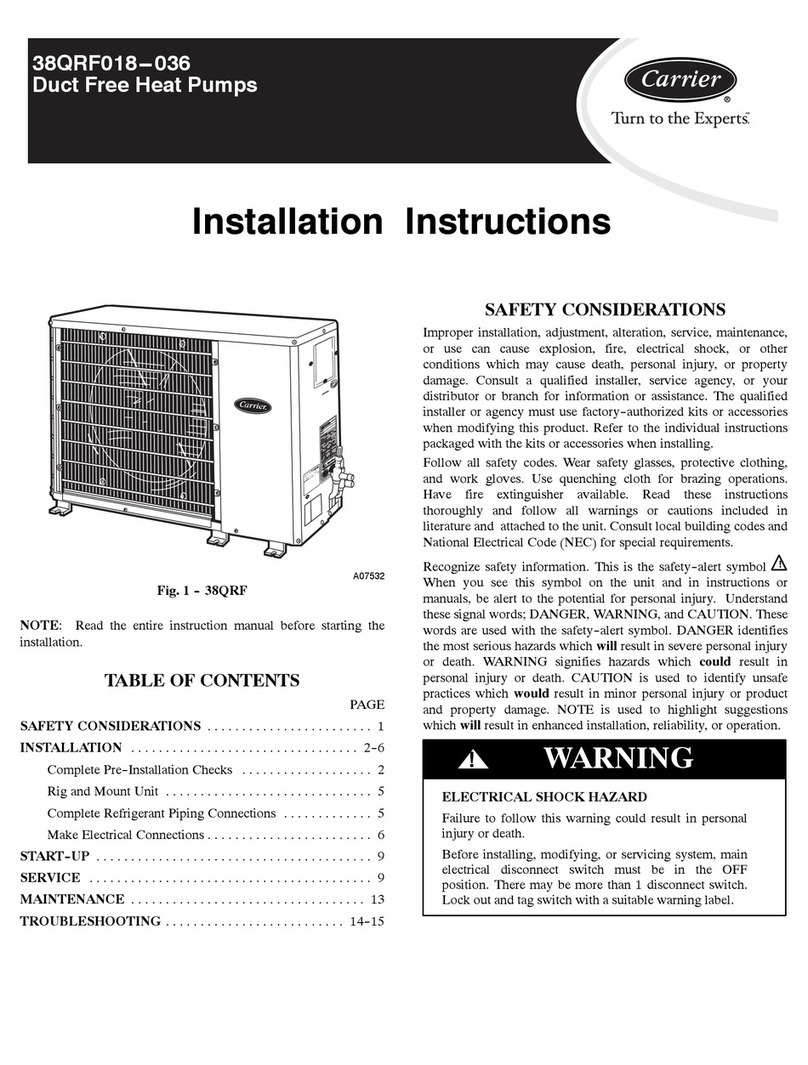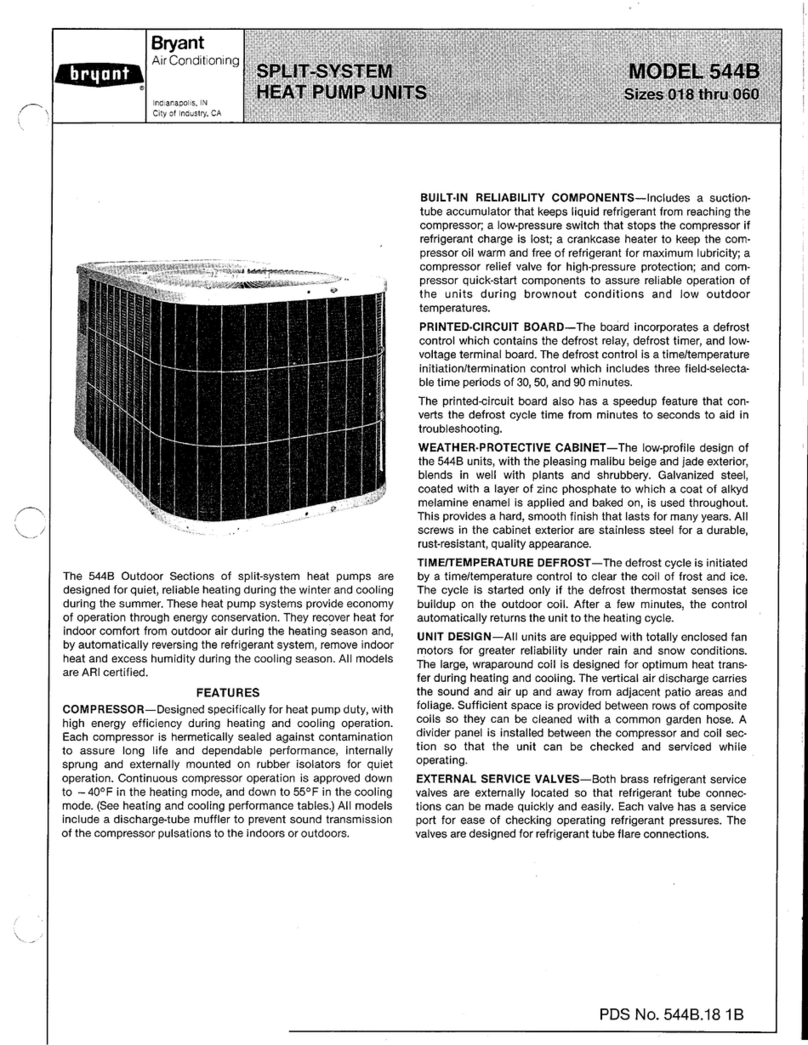Never operate your unit without the filter(s) in place. Failure
to heed this warning may result in damage to the blower
motor and/or compressor. An accumulation of dust and lint on
internal parts of your unit can cause loss of efficiency and , in
some cases, a fire.
Fans and Fan Motor
Periodically, check the condition of fan wheels and housings and
fan-motor shaft bearings. Contact your dealer for the required
annual maintenance.
Indoor and Outdoor Coils
Cleaning of the coils should only be done by qualified service
personnel. Contact your dealer for the required annual mainte-
nance.
Condensate Drain
The drain pan and condensate drain line should be checked and
cleaned at the same time the cooling coils are checked by your
dealer.
Compressor
All compressors are factory-shipped with a normal charge of the
correct type refrigeration grade oil. A compressor should rarely
require additional oil.
Condenser Fan
Do not poke sticks, screwdrivers, or any other objects into
revolving fan blades. Injury or equipment damage may result.
The fan must be kept free of all obstructions to ensure proper
cooling. Contact your dealer for any required service.
Electrical Controls and Wiring
Electrical controls are difficult to check without proper instrumen-
tations. If there are any discrepancies in the operating cycle,
contact your dealer and request service.
Refrigerant Circuit
The refrigerant circuit is difficult to check for leaks without the
proper equipment. If inadequate cooling is suspected, contact your
local dealer for service.
System under pressure. Relieve pressure and recover all
refrigerant before system repair or final unit disposal to avoid
serious injury or death. Use all service ports and open all
flow-control devices, including solenoid valves.
Unit Panels
After performing any maintenance or service on either of these
units, be sure all panels are fastened securely in place to prevent
rain from entering unit cabinet and to prevent disruption of the
correct unit airflow pattern.
REGULAR DEALER MAINTENANCE
In addition to the type of routine maintenance you might be willing
to perform, your unit should be inspected regularly by a properly
trained service technician. An inspection (preferably each year, but
at least every other year) should include the following:
1. Inspection and, if required, cleaning of the outdoor and indoor
coils.
2. Inspection and, if required, cleaning of the indoor coil drain.
3. Inspection and cleaning of blower wheel housing and motor.
4. Inspection of all supply-air and return-air ducts for leaks,
obstructions, and insulation integrity. Any problems found
should be resolved at this time.
5. Inspection of the unit base to ensure that no cracks, gaps, etc.,
exist which may cause a hazardous condition.
6. Inspection of the unit casing for signs of deterioration.
7. Inspection of all electrical wiring and components to assure
proper connection.
8. Inspection for leaks in the refrigerant circuit. Pressure-check
to determine appropriate refrigerant charge.
9. Inspection of compressor oil level by service person to ensure
proper oil level is maintained in the compressor when it is
installed and running.
10. Operational check of the unit to determine working condi-
tions. Repair or adjustment should be made at this time.
Your servicing dealer may offer an economical service contract
that covers seasonal inspections. Ask for further details.
Complete service instructions can be found in each unit’s Instal-
lation, Start-Up and Service Instructions.
BEFORE YOU CALL FOR SERVICE ...
...check for several easily-solved problems.
If insufficient heating or cooling is suspected:
( ) Check for sufficient airflow. Check the air filter for dirt. Check
for blocked return-air or supply-air grilles. Be sure they are open
and unobstructed. If these checks do not reveal the cause, call your
servicing dealer.
If your unit is not operating at all, check the following list for
easy solutions:
( ) Check to be sure that your thermostat temperature selector is set
below the indoor temperature during the cooling season or above
the indoor temperature during heating season. Be sure the SYS-
TEM switch or MODE control is in the COOL or HEAT position
and not in the OFF position.
( ) If your unit still fails to operate, call your servicing dealer for
troubleshooting and repairs. Specify the model and serial numbers
of your unit. (Record them in this manual in the space provided.)
If the dealer knows exactly which unit you have, he may be able
to offer suggestions over the phone, or save valuable time through
knowledgeable preparation for the service call.
IN CASE OF TROUBLE
If you perform the steps above and unit performance is still
unsatisfactory, shut off the unit and call your dealer.
Dealer’s Name ______________________________________
Telephone___________________________________________
UnitModel__________________________________________
UnitSerialNumber___________________________________
3
Date of Installation ___________________________________

